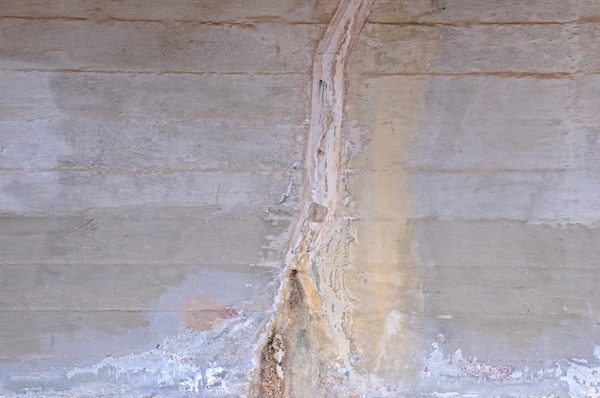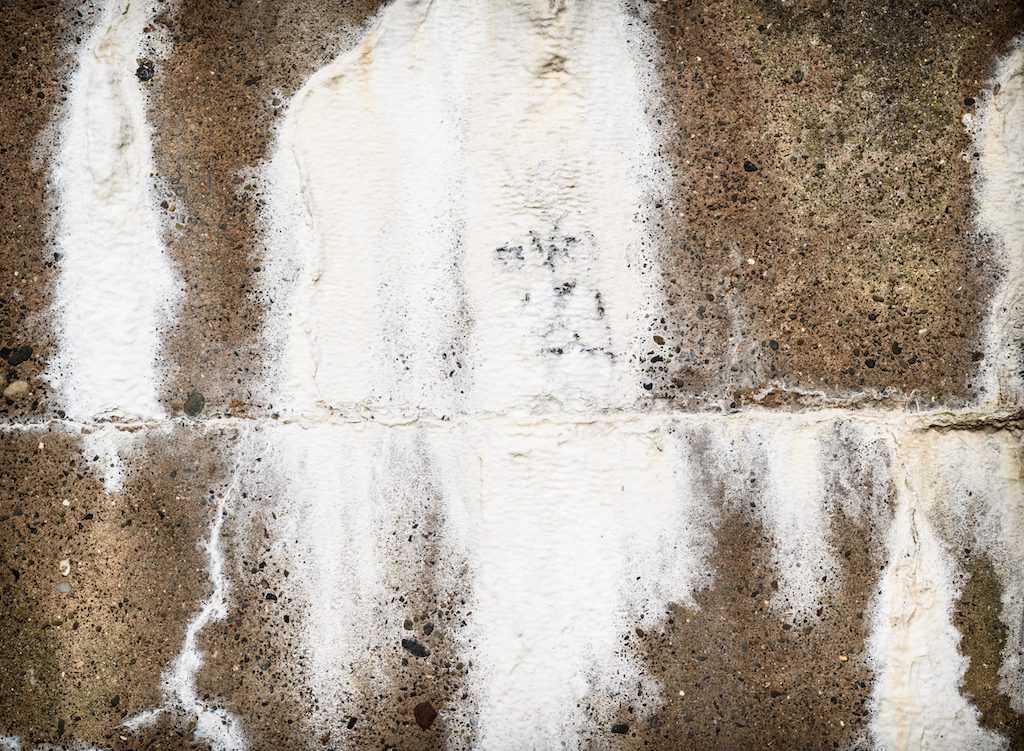A conscientious homeowner conducts regular inspections of his home including the basement and outer foundation walls. There are all sorts of clues that there is a problem with water or moisture damaging the home’s structural base. There is, of course, the obvious pool of water on the basement floor! There might even be evidence of shifting or cracking in the walls or floor. One clue, however, might be harder to recognize as a foundation problem and seen as just something to be cleaned away. A white chalky film may appear on the concrete finish of your foundation’s walls or floor.
This white, powdery substance is a result of water mixing with the salts in the natural stones or the constructed bricks around your home’s foundation. The water filters through the porous material and when it dries, you are left with a residue or stain. An example of what it might look like is on roads and highways after icy conditions have caused salt to be used as a sliding deterrent. When the road dries, the salt leaves behind a white stain. On your home, it can be an unpleasant cosmetic appearance or the sign of something seriously wrong with your foundation. Either way, it needs to be addressed because it means water is seeping into your foundation when it shouldn’t be.
The salty powder is not likely to be harmful to your family’s health. It is not like white mould which has a definite health risk. It is something to have inspected though because it means you have an underlying problem with moisture which can lead to other serious issues with your basement. The only way the element is created is when water flows through the bricks or concrete. It is a definite indication that your foundation is not waterproof and you may have bigger problems in the future.

The best way to avoid having a problem with the white staining, is to ensure that the foundation is properly constructed with good quality concrete, mortar and salt-free water. Of course, this is only possible when you are building a new home. You should also ensure that water is not getting easy access to your home’s foundation. Verify that there is good drainage, the gutters are not faulty and you don’t have obvious cracks in the foundation. The most effective way to keep the powdery stuff off the foundation walls or floors is to have the basement waterproofed. The process of waterproofing a foundation involves sealing the concrete and should be conducted before you finish the basement to avoid added costs. Using a reputable company that specializes in waterproofing foundations, like City Wide Group will ensure your foundation stays dry.
If you find evidence of moisture that has seeped through the foundation walls or floor, you should not wash or scrub the stain away yourself. The stain can be white or other colour depending on the materials and chemicals in the bricks or concrete. Cleaning away these stains involves several processes including the use of strong acids. If it is mould, there is a larger health concern to removing it. You need to be certain whatever the stain is, it is appropriately identified and handled safely.
Homeowners who want to protect their property’s foundation should ensure it is protected from the harmful effects of water seeping through the walls. Waterproofing the basement supplies the confidence that the foundation will stay dry and provide the kind of support and stability to your home and family. To avoid finding a nasty surprise in your basement, you could call in the City Wide Group to inspect your foundation walls, floors and surrounding drainage system to recommend measures to waterproof your home. With 55 years of experience and a 21-year track record of winning the Consumer Choice Award in Toronto, you can be assured your foundation waterproofing project will be handled professionally and effectively. When the work is complete you will have not only the assurance of a job well done, you will have a lifetime transferable warranty.
While finding a little whitish stain on the walls or floor of your basement may seem trivial or cosmetic, make sure it is not an indication of bigger problems with your home’s foundation. Call in the experts to identify its source and fix the underlying problem.










